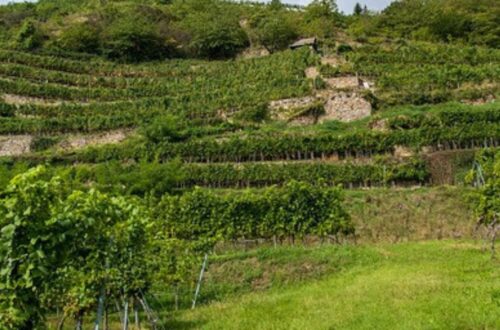
Is Blaufränkisch Pinot Noir?
While Austria is renowned for its high-quality white wines made from native Grüner Veltliner and Riesling grapes, it also boasts exceptional red wines from indigenous grape varieties. They are named Zweigelt, Blaufränkisch and Saint Laurent.
I usually compare Saint-Laurent to Pinot Noir, but following several discussions with friends and tastings, some have compared Blaufränkisch to Pinot Noir.
So, is Blaufränkisch Pinot Noir? That’s a definite no but let’s find out why!
We’ve got Blaufränkisch, famous for making red wines that are medium to full-bodied, with quite a bit of tannin and acidity. Then, there’s Pinot Noir, which makes lighter to medium-bodied red wines. They have less tannin, more acidity, and a bit of a lighter taste.
When Blaufränkisch used to be Pinot Noir…
For a long time, it was believed that Blaufränkisch was genetically identical to Pinot Noir (and even Gamay noir). This actually explains its nicknames Borgogna and Gamé in Croatia and Bulgaria.
However, thanks to DNA testing, in 2016, researchers finally found its parents! We now know that Blaufränkisch is a crossing between Gouais Blanc (nicknamed the vine Casanova, due to its numerous descendants) and an old Slovene grape variety, Blaue Zimmettraube. No offense to the Austrians, Blaufränkisch is therefore a Slovenian grape variety.
A beginner’s guide to Blaufränkisch
Blaufränkisch, a leading variety in Austria, is the same grape as Hungary’s Kékfranco and Germany’s Lemberger. This late-ripening grape requires warm, thick soils similar to Cabernet Sauvignon in Bordeaux, and its thick skin makes it resistant to diseases and rot.
Like Riesling, Blaufränkisch is highly influenced by the soil it grows in, producing different wine styles depending on whether it is grown in the limestone of Leithaberg or the rich deep soils of Mittelburgenland.
Wines from Leithaberg are known for their elegance, while those from Mittelburgenland are full-bodied and spicy. Blaufränkisch wines from Südburgenland are refined, while those from Carnuntum, which has a cooler climate, exhibit red fruit aromas.
In the past, Blaufränkisch wines were heavily oaked and concentrated, similar to Bordeaux wines. However, modern consumers prefer more drinkable wines that are balanced and less oaky. As a result, Blaufränkisch wines are now typically vinified simply and rounded out with aging in large casks, resulting in fruity wines with aging potential. These wines usually feature black fruit aromas and bold flavors.
Want to know more? Check out my full beginner’s guide to Blaufränkisch.
A beginner’s guide to Pinot Noir
Unlike Blaufränkisch, Pinot Noir is from Burgundy in France. It is now grown in many parts of the world.
Pinot Noir produces light to medium bodied wines, with high acidity and low tannins, which makes it very approachable and easy to drink. It has flavours of red cherry, raspberry, strawberry with notes of earth and smoke.
It is usually unoaked, but when it is, it brings vanilla and spice aromas.
Pinot Noir can age very well but it depends on the winemaking style. Usually, Pinot Noir is best consumed with five to seven years of age.
No, Blaufränkisch is not Pinot Noir : the differences
So, on the one hand, we have Blaufränkisch, known for producing medium to full-bodied red wines with moderate to high tannins and acidity.
On the other hand, we have Pinot Noir, known for producing light to medium-bodied red wines with low to medium tannins and high acidity.
See the difference in these two profiles?
So, no, Blaufränkisch is definitely not Pinot Noir!







